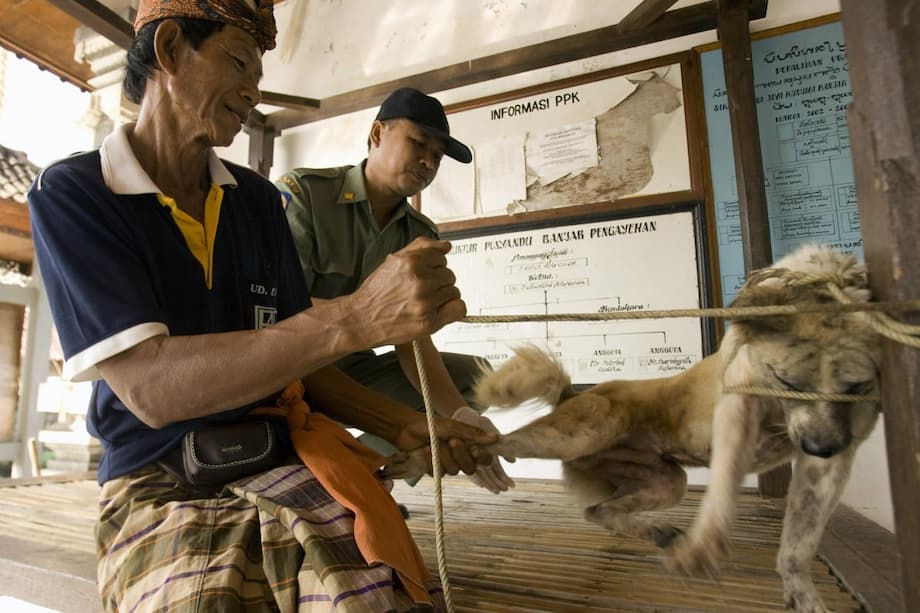Rabies Outbreak in Bali: Popular Tourist Areas Declared Red Zones
Bali, Indonesia’s world-renowned holiday destination, is facing a renewed public health crisis as authorities declare several popular tourist areas—including South Kuta, Nusa Dua, Jimbaran, and parts of Canggu—as rabies red zones. The move comes after a surge in animal bite incidents and confirmed rabies cases among dogs, sparking urgent vaccination drives, heightened public health warnings, and international travel advisories. The outbreak underscores the persistent challenge of rabies on the island, despite years of control efforts and the island’s continued popularity among global travelers.
- Rabies Outbreak in Bali: Popular Tourist Areas Declared Red Zones
- What Is a Rabies Red Zone and Why Has Bali Declared Them?
- How Serious Is the Rabies Situation in Bali?
- How Are Authorities Responding to the Outbreak?
- International Travel Warnings and Advice for Tourists
- The Human Impact: Stories from the Front Lines
- Why Does Rabies Persist in Bali?
- In Summary
What Is a Rabies Red Zone and Why Has Bali Declared Them?
In Bali, a “red zone” is an area where rabies is actively circulating among animals, typically dogs, and where urgent interventions are required. According to local protocols, even a single confirmed case of rabies in a village is enough to trigger red zone status. This approach is designed to prevent the rapid spread of the deadly virus, which can quickly escalate if not contained.
Recent weeks have seen at least one to two dogs in each of several affected villages test positive for rabies. Acting head of animal health for the Badung Agriculture and Food Service, Anak Agung Istri Brahmi Witari, explained that the high density of stray dogs and the terrain—especially in South Kuta, where bushes provide nesting grounds for strays—contribute to the risk. “Even though there are only one or two cases per region, we take it seriously. We immediately carried out vaccinations and sweeps. What is important is not the number of cases, but the potential for spread,” Witari said.
Which Areas Are Affected?
The red zones include:
- South Kuta (including Tanjung Benoa, Nusa Dua, Jimbaran Bay)
- Parts of Mengwi District (covering Canggu’s Pererenan Beach and Seseh)
- Other tourist hotspots such as Ubud and Gianyar Regency have also reported cases
These areas overlap with some of Bali’s most visited beaches, resorts, and cultural sites, raising concerns for both locals and international visitors.
How Serious Is the Rabies Situation in Bali?
Rabies is a viral disease that attacks the central nervous system and is almost always fatal once symptoms appear. It is most commonly transmitted through the bite or scratch of an infected animal—primarily dogs, but also monkeys and other mammals. Bali has the highest number of rabies cases in Indonesia, with most human cases resulting from dog bites.
From January to March this year alone, there were over 13,000 reported rabies cases and at least 25 deaths following bites from infected animals. The World Health Organization (WHO) notes that rabies remains endemic in 26 Indonesian provinces, with Bali as a persistent hotspot. The island’s unique social and environmental factors—such as the large population of stray and community dogs, and relaxed attitudes toward animal control—make eradication especially challenging.
In 2024, Bali’s provincial health ministry reported over 39,000 people bitten by rabies-carrying animals, with about 90 percent of bites attributed to dogs. Tragically, children are often among the victims, and cases sometimes go unreported, especially in lower socio-economic groups where awareness and access to healthcare may be limited.
Why Is Rabies So Hard to Control in Bali?
Several factors contribute to the persistence of rabies on the island:
- Stray and Community Dogs: Bali has an estimated 500,000 stray dogs. Many dogs are not officially owned but live communally, roaming freely and mingling with both pets and other strays.
- Low Vaccination Coverage: Only about 55 percent of the dog population is vaccinated, well below the 70 percent threshold needed for herd immunity. The high cost of animal vaccination and lack of enforcement make it difficult for many locals to keep their pets protected.
- Public Attitudes: Some residents do not perceive rabies as a serious threat, and children may not report bites. There is also a tendency to abandon sick dogs out of fear, increasing the number of unvaccinated strays.
- Dog Movement and Trade: Informal sales of unvaccinated dogs and breeders selling dogs without proper vaccination undermine control efforts.
Efforts to control rabies have included both mass vaccination campaigns and, controversially, culling of stray dogs. While vaccination has proven effective in reducing cases, culling has often disrupted herd immunity and drawn criticism from animal welfare groups and tourists alike.
How Are Authorities Responding to the Outbreak?
In response to the latest surge, Bali’s government has launched emergency mass vaccination and sterilization campaigns targeting both stray and owned dogs in red zone areas. Animal welfare groups are working alongside officials to vaccinate and sterilize dogs, especially in tourist-heavy zones like Nusa Dua and Jimbaran Bay.
According to Anak Agung Istri Brahmi Witari, if vaccination coverage in an area falls below 70 percent, emergency teams are dispatched to conduct further vaccinations. “Vaccination is protection for us and pets. We urge the public not to let their dogs roam. If you have a dog, it must be handled or tied up. Rabies vaccination must also be done every year,” Witari emphasized.
Bali has also activated 103 rabies treatment centers across the island, ensuring that vaccines and immunoglobulins are available at major hospitals and clinics. However, availability can vary, especially in rural areas, and shortages have been reported in the past. The island follows the WHO’s Stepwise Approach to Rabies Elimination (SARE) framework, focusing on multisector coordination, surveillance, and rapid response to outbreaks.
What Happens When a Red Zone Is Declared?
When a rabid animal is identified, local protocols include:
- Immediate area control and restriction of animal movement
- Mass vaccination of animals within a specific radius
- Increased surveillance and testing of animals
- Public awareness campaigns and health advisories
- Selective culling of suspected rabid strays in some cases
These measures aim to contain the outbreak and prevent further transmission to humans and other animals.
International Travel Warnings and Advice for Tourists
The outbreak has prompted travel advisories from several countries, including the United States, United Kingdom, and Australia. These advisories urge travelers to exercise caution, avoid contact with animals, and consider pre-exposure rabies vaccination—especially for those planning extended stays, visiting rural areas, or engaging in activities that may bring them into close contact with animals.
The US Centers for Disease Control and Prevention (CDC), UK Foreign, Commonwealth & Development Office (FCDO), and Australia’s Department of Foreign Affairs and Trade (DFAT) all recommend:
- Ensuring travel insurance covers rabies exposure and treatment
- Seeking immediate medical care if bitten or scratched by an animal
- Washing wounds thoroughly with soap and water for at least 15 minutes
- Reporting any animal bites or scratches to local health authorities
- Staying in urban areas where medical facilities are more accessible
Australian authorities have highlighted the surge in rabies cases in tourist areas and urge travelers to avoid contact with animals and report any bites or scratches promptly. The UK has warned that rabies vaccines can be difficult to access in remote areas, advising travelers to stay in urban regions or carry essential medication.
What Should Tourists Do to Stay Safe?
Health experts recommend the following precautions for anyone visiting Bali:
- Avoid contact with all animals—including dogs, cats, monkeys, and other mammals—even if they appear friendly or are part of tourist attractions (such as the Ubud Monkey Forest or Uluwatu Temple).
- Consider pre-travel rabies vaccination if you plan to stay for an extended period, visit rural areas, or engage in outdoor activities.
- If bitten or scratched: Wash the wound thoroughly with soap and running water for at least 15 minutes, apply disinfectant, and seek medical care immediately for post-exposure prophylaxis (PEP).
- Know the location of nearby medical facilities that can provide rabies vaccines and immunoglobulins. Major centers in Bali include Sanglah General Hospital, BIMC Hospital, Kasih Ibu Hospital, and Trishnanda Care Centre.
Rabies is preventable with prompt and appropriate treatment. Post-exposure prophylaxis typically involves a series of rabies vaccine injections, and in severe cases, administration of human rabies immunoglobulin.
The Human Impact: Stories from the Front Lines
The rabies crisis in Bali is not just a matter of statistics—it has a profound human impact. In one recent case, a 54-year-old woman in Klungkung collapsed after being bitten by her own rabies-infected dog. She received both anti-rabies serum and vaccine, but the incident highlighted the risks even for pet owners. Authorities responded by vaccinating 120 dogs in her village and euthanizing 16 street dogs suspected of having rabies.
In another tragic example, the death of a four-year-old child bitten by a stray dog in Gianyar underscored the ongoing threat to Bali’s most vulnerable residents. These stories are a stark reminder that rabies remains a deadly and persistent danger on the island.
Community and Government Efforts
To combat the outbreak, Bali’s government has established a dedicated task force to treat bite wounds, provide vaccines, and educate the community. The Australian government is also supporting local efforts, administering 200,000 vaccines per year as part of a bilateral rabies control program. However, experts stress that greater community involvement and stricter controls on breeding and vaccination are needed to curb the disease.
Animal welfare organizations, such as the Bali Animal Welfare Association, have played a crucial role in mass vaccination campaigns and public education. Their efforts have shown that vaccination—not culling—is the most effective way to control rabies. “Our island-wide program had effectively reduced canine rabies by 86 percent, and then the government took over and went back to culling dogs, losing the much-needed herd immunity we had established,” said Janice Girardi, co-founder of the association.
Why Does Rabies Persist in Bali?
Despite years of control efforts, rabies remains entrenched in Bali due to a combination of factors:
- High numbers of stray and community dogs
- Low vaccination rates and inconsistent enforcement
- Public attitudes and lack of awareness
- Movement of unvaccinated animals between regions
- Occasional shortages of vaccines and immunoglobulins
Experts agree that rabies is 100 percent preventable with vaccines, but sustained commitment, community engagement, and adequate resources are essential to achieving elimination.
In Summary
- Bali has declared several popular tourist areas as rabies red zones following a surge in animal bite incidents and confirmed rabies cases among dogs.
- Red zones include South Kuta, Nusa Dua, Jimbaran, parts of Canggu, and other tourist hotspots.
- Authorities have launched emergency mass vaccination and sterilization campaigns, and 103 rabies treatment centers are active across the island.
- International travel advisories urge tourists to avoid contact with animals, consider pre-exposure vaccination, and seek immediate medical care if bitten or scratched.
- Rabies remains a persistent challenge in Bali due to high stray dog populations, low vaccination coverage, and public attitudes.
- Rabies is preventable with prompt vaccination and treatment—awareness and vigilance are key for both locals and visitors.




